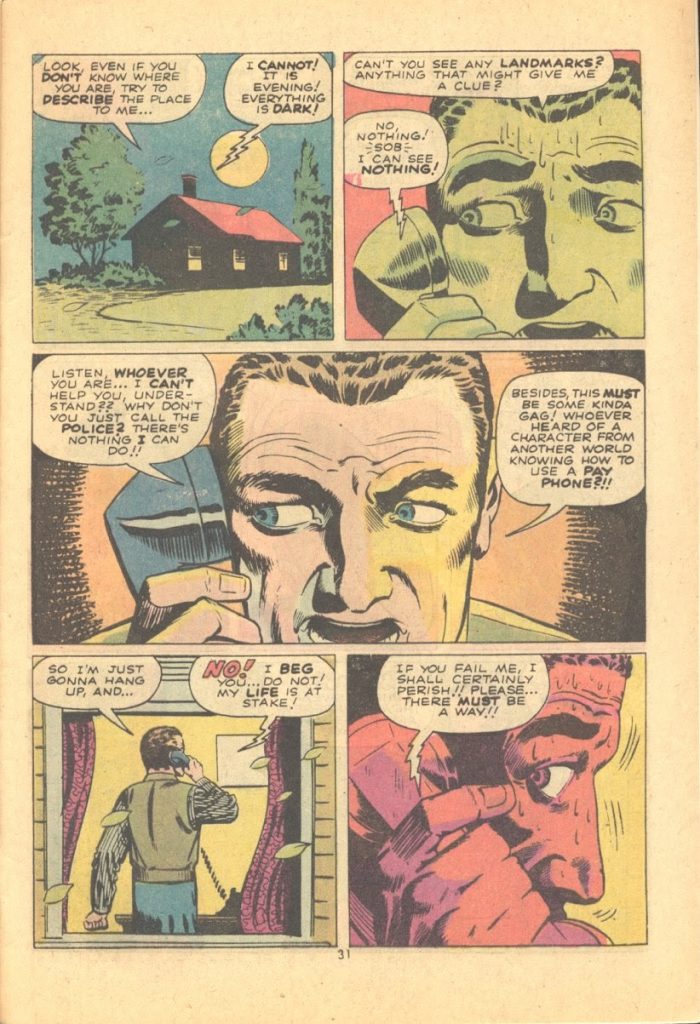Caleb Orecchio here with a nice little Ditko story, and other news.
—————————————————————————————————

Aw man, lookit that splash page.
I was digging through my back issues looking through my Kull the Destroyers I haven’t really looked at yet. Specifically, Kull the Destroyer #15 from 1974. It’s not a particularly interesting story. Those comics usually aren’t unless they feature some strange, spirited creature. So I flip through the entire issue, kind of disappointed, when I come across an interesting Ditko/Lee short story at the end. It’s a five-pager (six if you count the title page). I had a suspicion that this was a reprint of some back-up story to an old Kirby monster comic. After some digging, I found I was more or less right. “Help,” originally debuted in Strange Tales #94 in 1962.
The story is real simple. A guy answers his phone and the person on the other line seems to desperately need help. The mysterious caller is supposedly trapped in some dark place and fears his death. Our hero doesn’t believe him, and thinks it’s a gag. Yet, stays on the phone in case it’s real. The tension is actually relatively convincing.

It’s classic Ditko. He had knack for making clever little surreal stories that ended with a neat little twist in the last panel. No I’m not going to spoil it for you, you have to look for it yourself. Go. Go to your local place where back issues lay dorment, waiting to be mined. Drink from the fountain of newsprint and ink and mylar packaging and dusty cardboard boxes. Go True Believer, go.

—————————————————————————————————
if you don’t know, now you know
- According to Don Harriosn at Richmond Magazine, Paul Karasik and Mark Newgarden will be at Virginia Commonwealth University to give a lecture today! Looks like you’ll have to register if you want to go. Details here.
- I somehow missed Charles Hatfield’s review of the latest King-Cat collection, From Lone Mountain by John Porcellino, over at TCJ.com.
- I always enjoy reading Matt Seneca articles on comics.
- Rob Clough visited the Center for Cartoon Studies.
- Hey look, a popular comic strip.
—————————————————————————————————

Suzy and Cecil – 4-2-18 – by Gabriella Tito
—————————————————————————————————